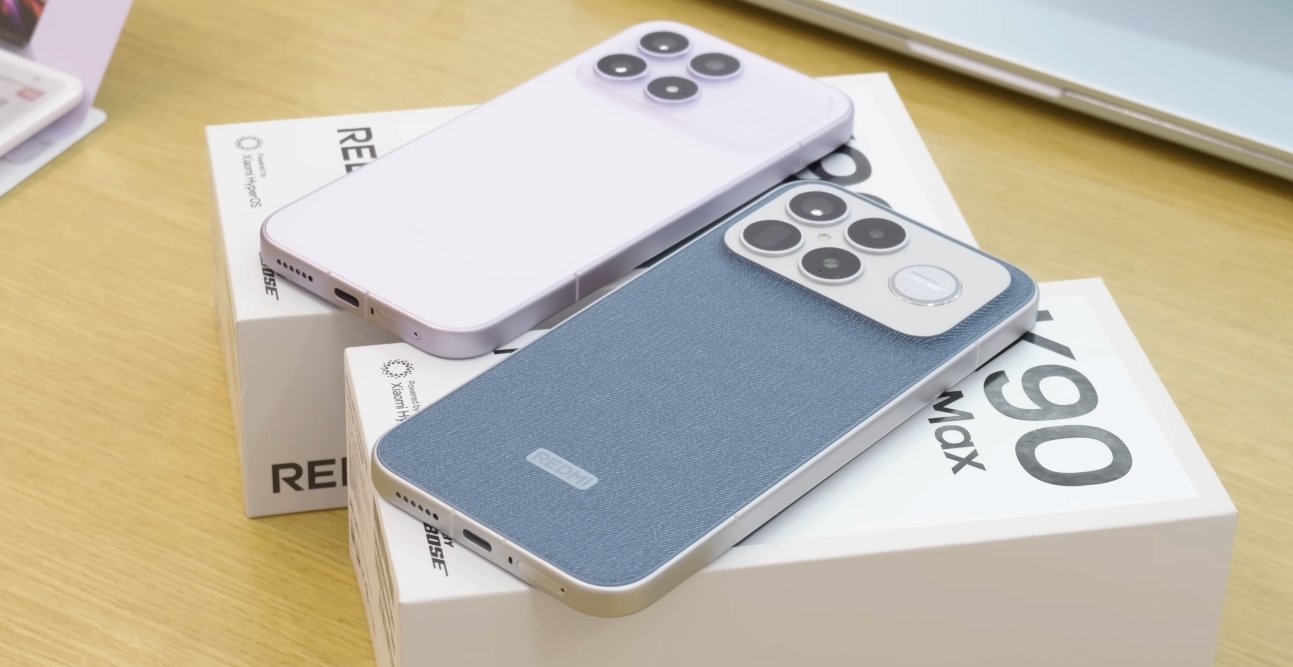How Redmi’s flagship stacks up against Samsung and Google in sound quality
Audio quality has become an increasingly important factor for smartphone buyers in the United Kingdom. With streaming services, podcasts, and social media videos dominating daily use, the sound performance of a phone can greatly influence user satisfaction. The Redmi K90 Pro Max, known for its performance and camera capabilities, now enters this conversation with claims of high-fidelity sound and an advanced stereo setup. The question for many UK buyers is whether its audio system can truly compete with premium, officially sold UK smartphones like the Samsung Galaxy S25 Ultra and the Google Pixel 10 Pro.
The Redmi K90 Pro Max comes equipped with a 2.1-channel stereo sound system that features dual linear speakers and a dedicated subwoofer. This configuration is rare among smartphones, offering a richer, more immersive soundstage than typical dual-speaker setups. UK users who often stream movies, listen to music on the go, or play games without headphones will immediately notice the broader audio range and punchier bass. The low-end frequencies feel deeper and fuller, while mids and highs remain crisp, creating an experience that mimics compact portable speakers rather than traditional phone audio.
In comparison, the Samsung Galaxy S25 Ultra delivers its usual refined stereo setup with speakers tuned by AKG. Samsung’s focus remains on clarity and spatial balance, making it excellent for dialogue-heavy content and professional calls. However, its bass presence is lighter than the Redmi’s, which some UK users may find lacking when playing dance or rock tracks. The S25 compensates with dynamic sound calibration that adjusts volume levels intelligently to maintain clarity in noisy environments, an advantage for people commuting through busy London streets or using their phones in open-air spaces.

The Google Pixel 10 Pro, on the other hand, takes a different approach. It offers a clean, well-balanced stereo output that emphasizes midrange frequencies for podcasts, news, and speech clarity. Yet, it lacks the depth of both the Samsung and the Redmi when it comes to music and cinematic audio. While Pixel devices are renowned for their consistent software tuning, many users find their speakers produce a flatter sound with limited bass resonance. For casual listening, the Pixel 10 performs well, but it falls short when richer soundscapes are desired, particularly in spacious or noisy settings.
When comparing these three devices in real-world UK environments, the differences become clear. Indoors, the Redmi K90 Pro Max easily fills a room with sound, producing strong bass even when not using external speakers. Samsung’s S25 remains more precise, with slightly cleaner separation between left and right channels, though it lacks the same body in lower tones. Outdoors, where ambient noise can overwhelm weaker systems, Redmi’s subwoofer setup shines by delivering a noticeable punch that keeps music or videos audible even on busy streets. For users accustomed to listening without headphones, this makes the Redmi a surprisingly powerful choice.
Beyond hardware, software optimization plays an essential role in how each phone delivers sound. The Redmi K90 Pro Max includes dynamic sound enhancement algorithms that balance loudness and clarity automatically. This tuning minimizes distortion at higher volumes, ensuring the speakers remain crisp during playback. Samsung’s audio management integrates tightly with Dolby Atmos, offering customizable sound profiles for movie, music, or voice modes. Google’s approach is simpler, relying on its adaptive audio system that adjusts based on content type, though it offers fewer manual controls.
Wireless audio performance is another area where UK consumers will notice subtle differences. Samsung supports a wide range of high-resolution Bluetooth codecs, making it ideal for use with modern wireless earbuds. The Redmi K90 Pro Max supports Hi-Res Audio and LDAC, ensuring compatible headphones can reproduce studio-quality sound. The Pixel 10 Pro, while capable, remains limited in codec variety, slightly reducing wireless sound fidelity compared to its rivals. This distinction may matter for audiophiles using premium Bluetooth headphones, but casual listeners are unlikely to notice major discrepancies.
For users relying on the built-in speakers alone, environmental acoustics also influence perception. UK homes and offices, often characterized by smaller rooms with reflective surfaces, can amplify bass-heavy output, making the Redmi’s subwoofer-driven system feel even more powerful indoors. Meanwhile, Samsung’s balanced tuning avoids distortion in tight spaces, which some users prefer for background music or video calls. Google’s more neutral sound profile makes it ideal for consistent playback at moderate volumes, suitable for quiet environments like study rooms or libraries.
Overall, the Redmi K90 Pro Max presents a compelling case for sound-conscious UK buyers. Its hardware offers a level of audio richness rarely found in phones outside the ultra-premium segment. The subwoofer integration is not a gimmick—it genuinely elevates the listening experience, making music playback more immersive and entertainment more engaging. Samsung continues to excel in versatility and software control, while Google maintains a safe, reliable sound profile suited for clarity-focused users.
In conclusion, for those in the UK prioritizing robust speaker performance, the Redmi K90 Pro Max stands out as a top contender. Its deep bass, wide soundstage, and consistent clarity across volume levels make it ideal for users who consume media directly through the phone’s speakers. Samsung remains the choice for balanced performance and professional-grade sound control, while Google appeals to those seeking clean, distortion-free playback. Still, Redmi’s combination of power, detail, and value could easily shift expectations for what smartphone audio can deliver in the UK market—proving that imported doesn’t always mean inferior, especially when it comes to sound.

